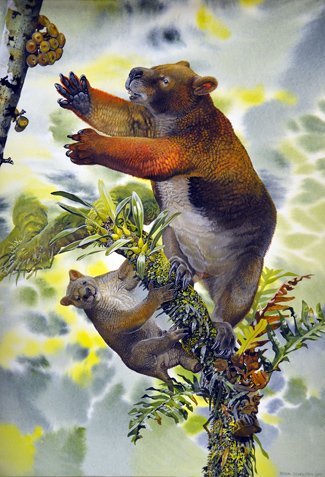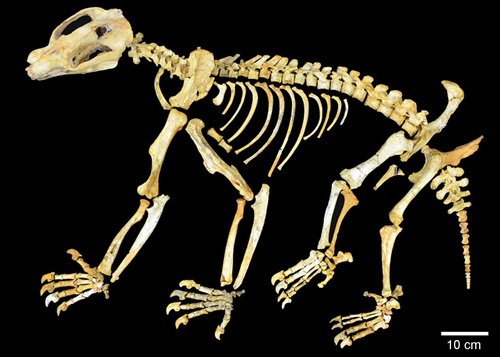Extinct wombat climbed trees like a koala

FOSSILISED REMAINS OF AN early relative of the wombat suggest that the marsupial lived in treetops around 15 million years ago.
The ancient bones, uncovered in an outback Queensland cave in the 1990s, could be the remains of the largest known tree-climbing marsupial, according to new research.
Scientists from the University of New South Wales and the University of Adelaide examined the skeleton of the species, known as Nimbadon lavarackorum, which was discovered at the Riversleigh World Heritage fossil field. The research revealed that the 70kg marsupial was equipped with powerful limbs to scale tree trunks.
Dr Karen Black, a palaeontologist from UNSW’s School of Biological, Earth and Environmental Sciences, says it was a surprise discovery given the animal’s hefty size and close ties to the wombat.
“To have a wombat-like animal up a tree was pretty amazing,” Karen says. The largest tree-climbing marsupial alive in Australia today is the Bennett’s tree kangaroo, which can weigh up to 14kg.
Extinct marsupial climbed trees like a koala
The scientists compared the Nimbadon skeleton with bones from living animals such as the koala, brushtail possum and Malayan sun bear. Honing in on the limbs, hands and feet, the study found the Nimbadon had the most in common with the koala.
“It had highly-mobile shoulder, elbow and wrist joints, so it was flexible for grabbing branches and climbing,” says Karen. “It also had very large hands and feet with opposable thumbs, and massive claws almost identical to a koala’s.”
Karen says these traits suggest that Nimbadon behaved similarly to the modern-day koala, using the same trunk-hugging method to climb trees.


